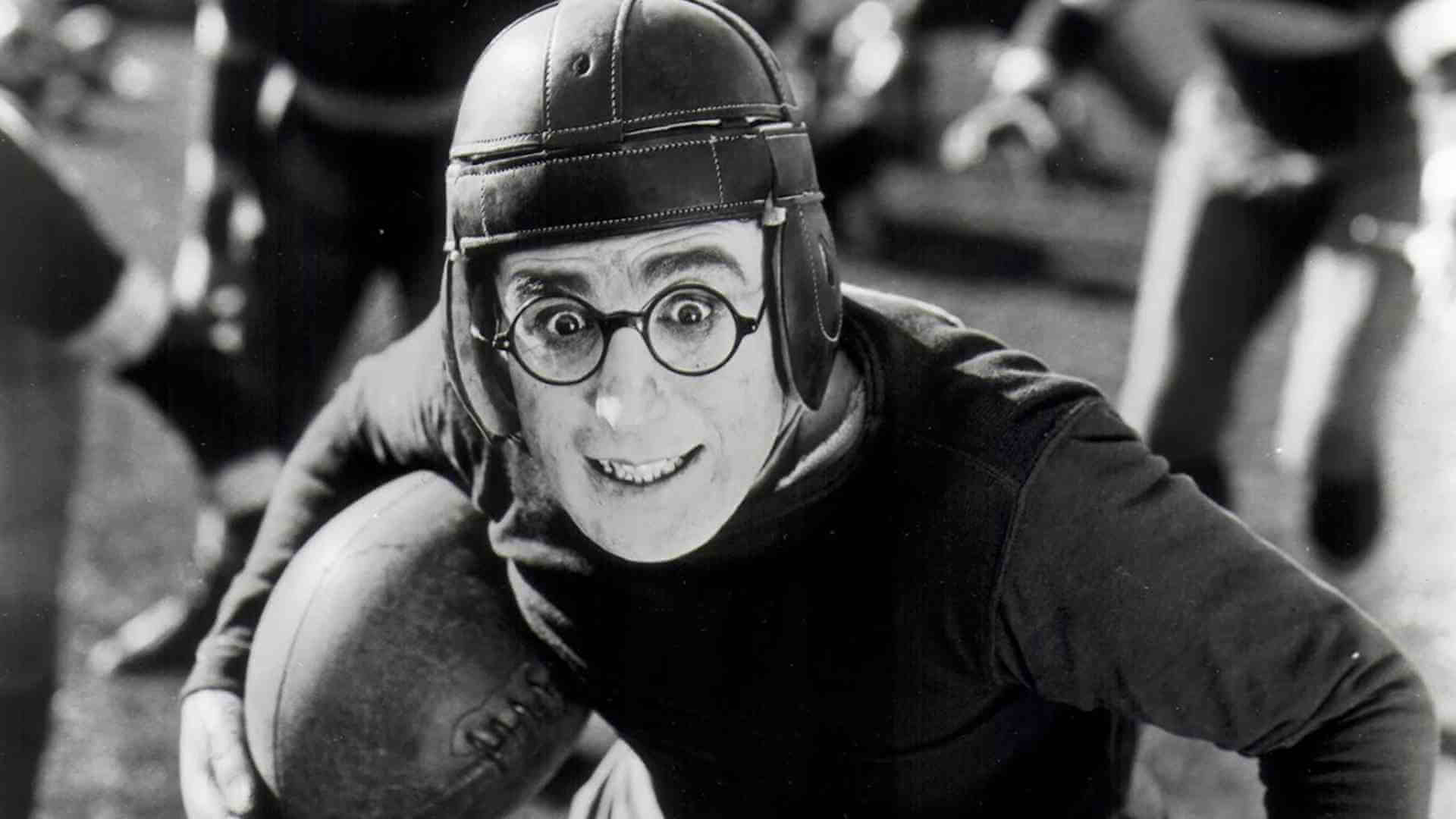For all their popularity, Charlie Chaplin and Buster Keaton weren’t figures with whom the average American could identify, in the sense of thinking, “That’s me up there!” Harold Lloyd was the silent comic who fulfilled that need. The typical Lloyd hero is a perpetually bumbling go-getter who wants nothing more than to be liked, and who seems like enough of a normal guy, despite the proto-geeky horn-rimmed glasses, to pull that off after some requisite struggles. In 1925’s The Freshman, his character, Harold Lamb, repeatedly introduces himself as “just a regular fellow,” following the lead of his own favorite movie star, Lester Laurel (a fictional actor who stars in the fictional film The College Hero). And it’s in Harold’s determined efforts to prove himself worthy, rather than in the sort of sustained physical comedy practiced by Chaplin and Keaton, that Lloyd truly shines. The Freshman was so successful that Keaton wound up making his own campus comedy, 1927’s College, but this was Lloyd’s natural milieu.
Another thing that distinguishes Lloyd’s films is that the intertitles are often as funny as the visual gags. Here, Tate University, the school Harold arrives at as a freshman, is described as “a large football stadium with a college attached,” deftly establishing the path he’ll need to take to earn the respect of the student body. Initially, however, he’s perceived as a laughingstock, in part because he insists on introducing himself to everybody by dancing a stupid little jig that he’d seen Lester Laurel perform. His willingness to buy ice cream for his so-called friends sustains the illusion of popularity, and of course there’s a pretty girl, Peggy (Jobyna Ralston, Lloyd’s regular love interest), who genuinely admires him. But Harold aspires to be Big Man On Campus, and it’s clear that only gridiron glory can make that happen. The movie’s climax was shot at the Rose Bowl (with crowd shots filmed separately at a game between Stanford and U.C. Berkeley), and sees Harold, who’s just the water boy, sent in as a desperation substitute after almost the entire Tate squad has been injured and carried off the field on stretchers.
That’s a tad contrived (in a way that isn’t especially funny—it’s hard to root for Harold hoping his teammates get hurt, so that he can play), and is one of the reasons why The Freshman, just issued on Blu-ray as part of the Criterion Collection, isn’t quite as glorious as the previous Lloyd classic the company released, 1923’s Safety Last! Another reason is that a large chunk of the movie’s second half is devoted to material better suited to Keaton, including a party sequence in which Harold wears a hastily tailored suit that rips if he so much as raises an arm or bends a knee. There are some laughs as the tailor attempts to re-stitch his duds from behind a curtain, but it doesn’t achieve the steadily escalating lunacy to which it aspires. On the other hand, nobody but Lloyd could win audience empathy by having his alter ego agree to be a tackling dummy for the football team, gamely rising to his feet and getting knocked down again and again and again. Making intense neediness seem heroic is no easy task, but Lloyd makes it look easy; when the improbably happy ending arrives, with milquetoast Harold scoring the game-winning touchdown, it feels fully earned.
As usual, Criterion has packed the disc with extras, including three Lloyd shorts (“The Marathon,” “An Eastern Westerner,” and “High And Dizzy”) and audio commentary (by Leonard Maltin and others). One of the more interesting notes, however, is buried in the booklet’s technical information, which most people probably don’t bother to read. As it turns out, the restored version of The Freshman seen today is mostly not the original film: Two versions were shot simultaneously, using separate cameras from slightly different angles, and approximately 60 percent of the Criterion edition (and pretty much every other edition you’re likely to see nowadays) was actually taken from the foreign-release version of the film, which was called College Days. UCLA, which restored The Freshman in 1998, opted to use that footage because it was in much better shape than the American negative, and the differences are presumably minor; nonetheless, it’s surprising to discover that over half of a classic film is now composed of (essentially) alternate takes. Then again, there’s no definitive text of Hamlet, either. And in the end, really, funny is funny.

